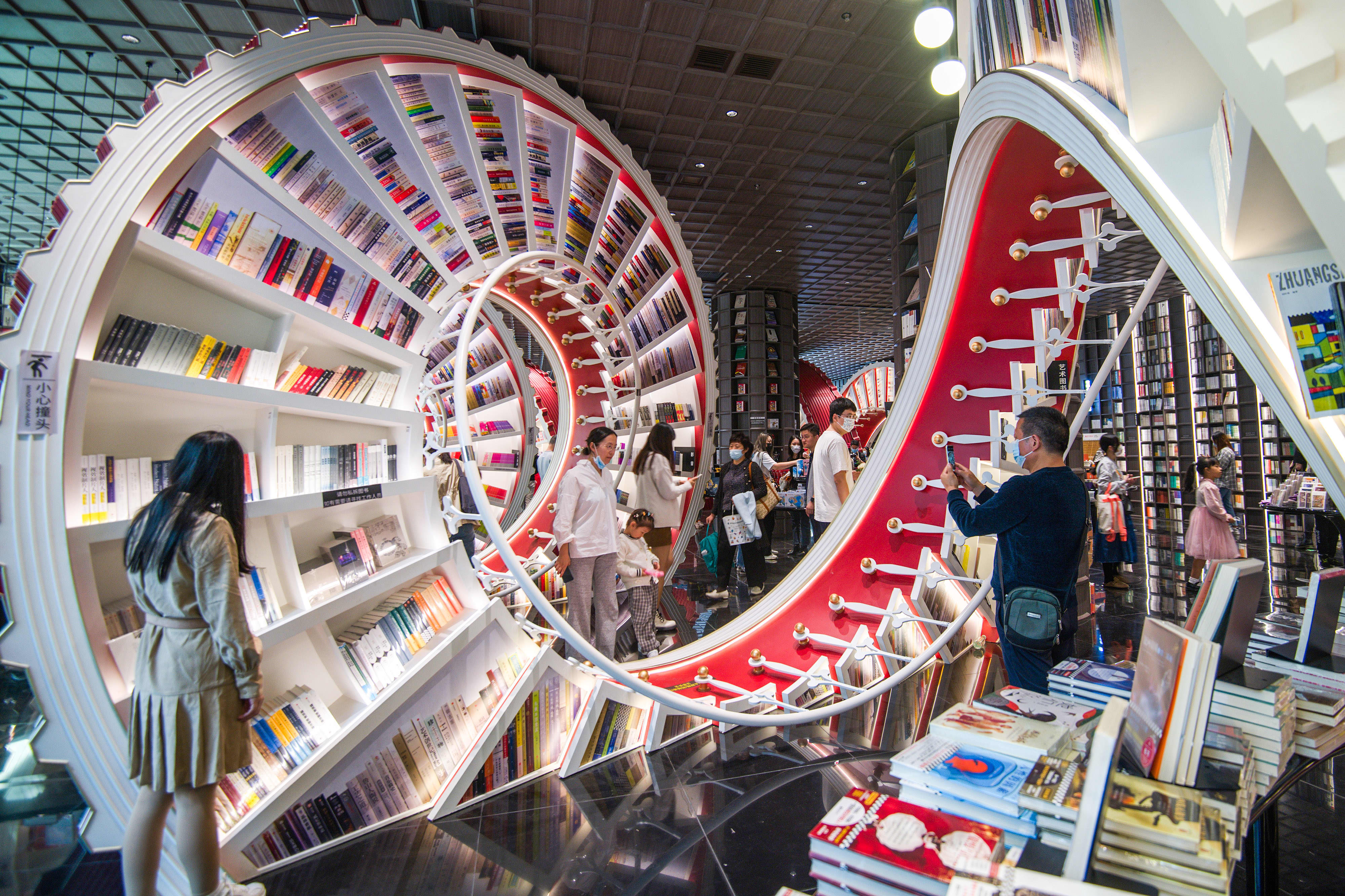Products You May Like
BEIJING — Social media plays such an important role for Chinese consumer businesses that for a crop of new bookstores, visual appeal tends to be a priority.
Elaborate interior designs — sometimes amplified by mirrors — have not only caught the attention of “Architectural Digest” but also young Chinese searching for new experiences.
“The Chinese consumer, especially the post-90s [generation], they want convenience, they want novelty,” said Derek Deng, Shanghai-based partner at Bain & Co., who leads the firm’s consumer products practice in Greater China.
“They desire the products [that] not only satisfy their functional needs, but can address their emotional needs,” he said, “whether it is something that you can show off to your peers, something that you always find as enjoyment, or something that you just feel like you need to make it easier for you to blend in.”
Shopping malls have noticed. Rather than signing deals with big department stores to have them as the main draw for customers, malls have turned to coffee and tea shops, finely designed bookstores, electric car showrooms and other trendy shops, said Jacky Zhu, head of research for west China at JLL.
“They can drive foot traffic. They can drive the foot traffic for a targeted customer,” he said. This is so much the case, he added, that malls will let bookstores pay a third or fourth of what an apparel or cosmetics store would in rent.
In addition to visually appealing interiors, many bookstores in China sell coffee, stationery and gifts. Nostalgia for the China of past decades is a popular theme.
One of Mia Huang’s favorite bookstores is a shop in a traditional, four-walled Beijing courtyard. The store displays many historical items such as bicycles and door signs, and has a public reading area, she said.
Huang, part of the post-90s generation, said she left her job at an internet technology company in 2019 to become a full-time travel blogger — sharing commentary, photos and videos about her experiences.
Another of Huang’s favorite bookstores is one converted from a church building in Beijing.
“Lots of people go there to ‘check in,'” she said in Mandarin, referring to a trend in which people visit places they’ve seen on social media, and then take their own pictures to prove they’ve been there.
Going to bookstores isn’t really for buying books, she said, noting that many of the shops have turned into tourist attractions or comfortable places to take a break in.
Some bookstores in China have become so popular that thousands of people are willing to trek out to remote areas, according to a 2019 report by state-affiliated online publication Sixth Tone. A village location of the hipster Librairie Avant-Garde bookstore brought in 1.5 million yuan ($234,375) in revenue for the year through mid-November, according to a report from state-run newspaper China Daily.
It’s less clear whether the surge of interest in visually attractive bookstores means the businesses are actually profiting from selling books.
The stores’ title selections are often concentrated in art and design, while non-book gift items can take up a significant part of the floorspace, according to this reporter’s observations.
In China, tight government control means that titles published or sold in the country must not run afoul of censors. Many bookstore entrances prominently display books by or about Chinese President Xi Jinping, while the state runs its own nationwide chain of bookstores.
Businesses calling themselves bookstores have continued to open.
More than 40,000 new bookstore-related businesses have registered in the country each year since 2017, according to Qichacha, a business database. For this year through November, 39,000 new bookstore businesses have registered — a 6% year-on-year increase, the data showed.
Those openings still outpace annual closures of about 10,000 or more bookstore-related businesses, the database showed.
However, bookstores were never an easy business in the digital age, and the financial troubles of high-profile bookstore chain Yanyouji this fall has generated online discussion on the future of photogenic bookstores. It reflects the difficulties of managing a business even after it gains traction on social media, and is emblematic of a trend across China’s fast-growing consumer market.
Of the 46 Chinese consumer brands that had burst onto the scene in 2018, only 17 were still doing well this year, Bain and Kantar Worldpanel analysts found in a report released this month. In makeup, 30% of the brands that had entered the market in 2016 have been discontinued, the report said.
China’s new consumer brands of the last few years have tended to use online channels of e-commerce and social media to get an initial wave of traffic, Deng said. He noted that digital data on consumer trends helps new brands quickly test and tailor their products.
But it’s harder for these newcomers to find a second channel for growth, which typically requires expansion into the more complicated world of physical stores and local distribution, Deng said.
“What’s been always missing is, once you recruit [consumers] in, once you have them buy your product for the first time, how can you make sure they continue with you?” he said. “The rate of repeat purchase has become one of the single most important factors for those insurgent brands to go from the first wave of success to more sustainable growth.”
For a novelty bookstore, that means getting picture-takers to come back and spend money — even when retail sales have been sluggish.
Some are bringing in specialty supermarkets, hair stylists and events with book authors to create a community that can cater to an entire family’s needs, or that of a specific demographic, JLL’s Zhu said. “From my point of view, I believe the bookstore can survive,” he said. “They can survive based on their changing strategy to adapt to the changing retail market.”
